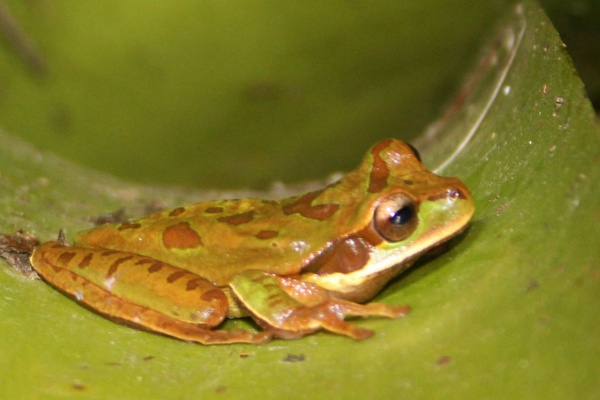Facts About New Granada cross-banded tree frog
The New Granada cross-banded tree frog, also known as the masked tree frog, belongs to the Hylidae family. This species is indigenous to several countries, including Colombia, Costa Rica, Ecuador, Honduras, Nicaragua, and Panama. These frogs thrive in diverse environments such as subtropical and tropical dry forests, moist lowland forests, rivers, marshes, plantations, gardens, urban areas, degraded forests, ponds, canals, and ditches.
The nickname "masked tree frog" originates from the distinctive black or dark markings on their faces, extending from the nose to the ear and covering the eye. This unique pattern aids them in blending into their surroundings by concealing their eyes from potential predators. Interestingly, the males are smaller than the females, a phenomenon known as sexual dimorphism. During the day, these frogs usually appear tan, but they turn green at night.
Despite their adaptability to varying habitats, the New Granada cross-banded tree frog is most commonly found along forest edges, roadside ditches, and in secondary rainforests. In Costa Rica, they are widely distributed, except in the driest areas of the Nicoya Peninsula, and can be found at elevations up to 1,100 meters.

 Panama
Panama